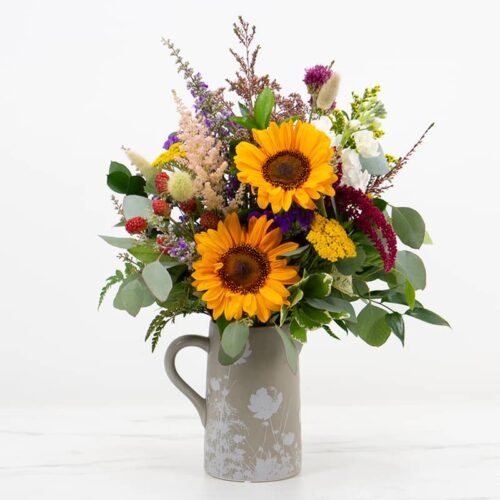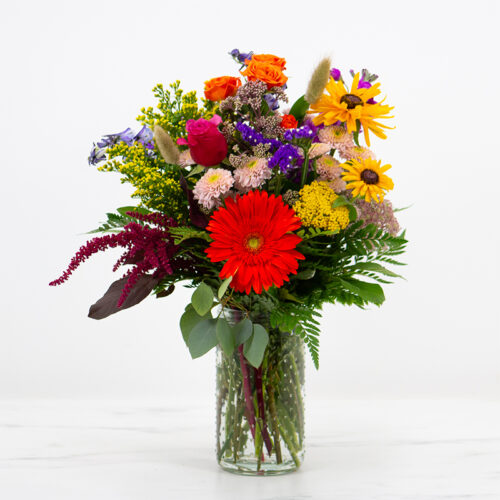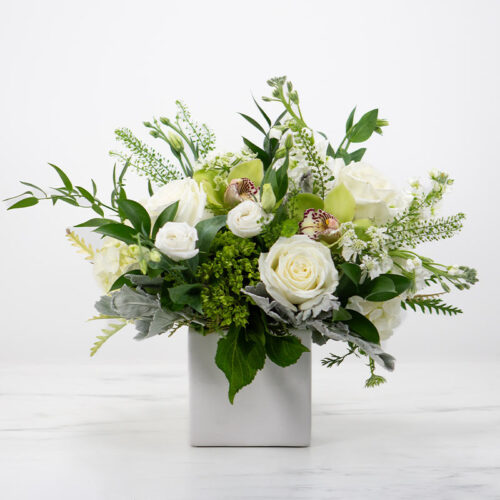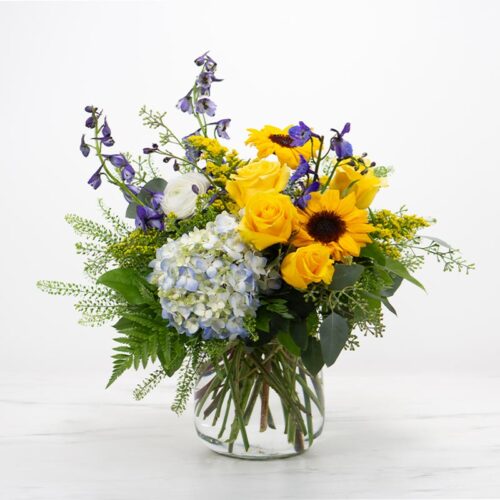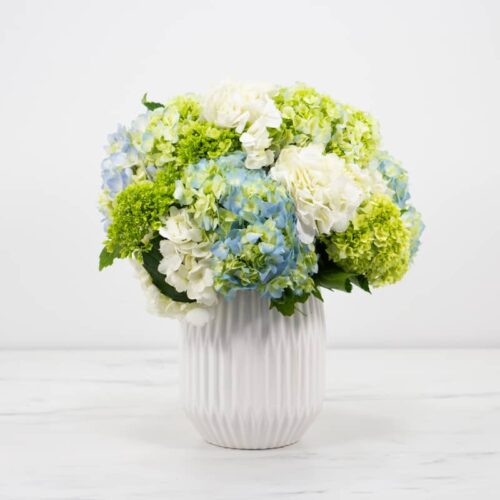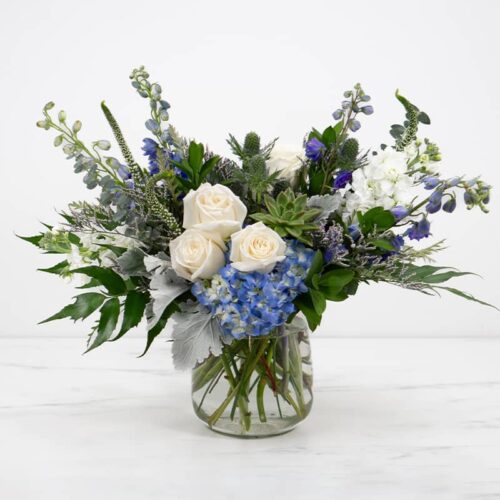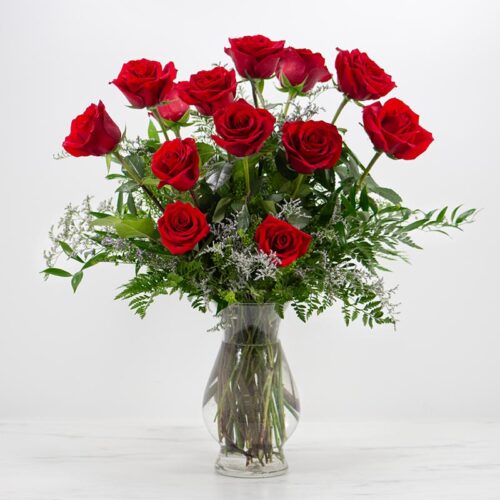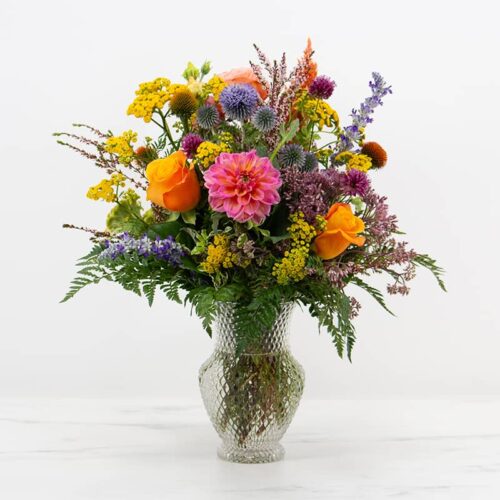The Secret life of Florists: A Rose’s Journey
If you’ve ever purchased roses from a florist or grocery store, you’ve probably been able to walk in, buy them off a display, and put them in a vase at home with very minimal (if any) prep work. But did you know that roses go through a multi-step prep process before they are put out for sale?
At Matlack Florist, Mondays are rose shipment days, and our processing and sales teams put a lot of work into making our roses look fresh and clean before they even make it on the shelf. In this blog, we’ll take you behind the scenes into the day in the life of a Matlack rose!
Shipping
Although we purchase many seasonal plants and flowers from local growers, the majority of our roses come from specialty farms (like this one!) in Ecuador and other South American countries. These locations are perfect for growing roses year-round and ensure that we and other florists around the globe have beautiful blooms during every season!
Our roses are “dry-packed,” meaning they are packaged in boxes without water. They are flown from South America to the US in refrigerated containers, where they are then picked up by our wholesalers and transported across the country to our shop. Dry-packed roses can only survive for a short time without water, even with refrigeration, meaning the whole process from picking to delivery takes place in a pretty small window of time – usually just a couple days!
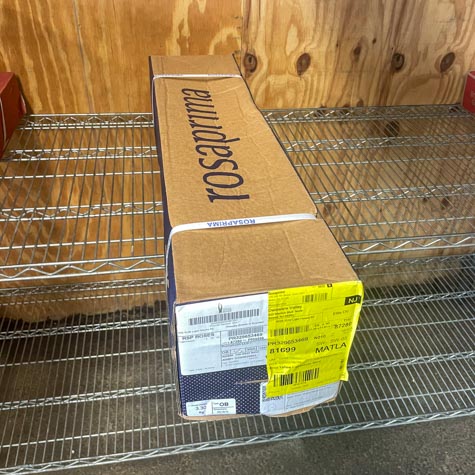
A box of dry-packed roses in our loading dock.
Processing
The first stop for our roses once they arrive at our shop is initial unpacking and trimming. Our roses are typically shipped in boxes of 50, and red roses are shipped in boxes of 100. Each box comes packed with four to eight bunches of roses wrapped in cardboard for safekeeping. Once the roses are brought into processing, the boxes are opened, the bunches are laid out, and the rubber bands holding the bunches together are cut off.
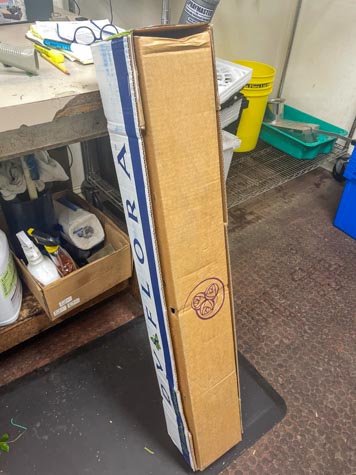
Unopened roses ready for processing.
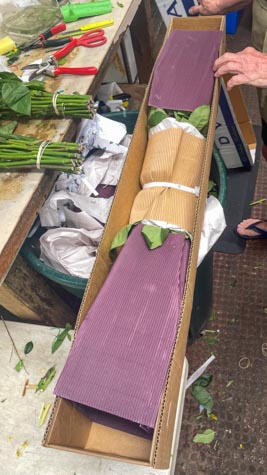
Bunches packaged in a long box.
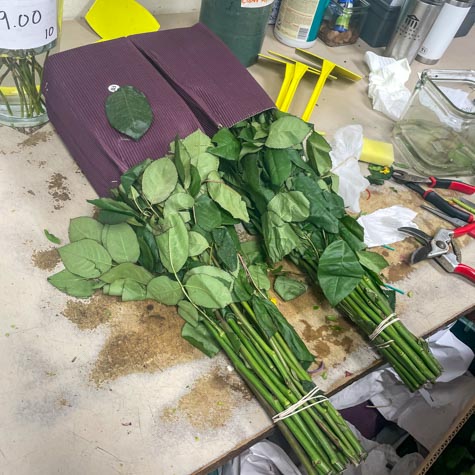
Roses in cardboard packaging laid out and ready to be processed.
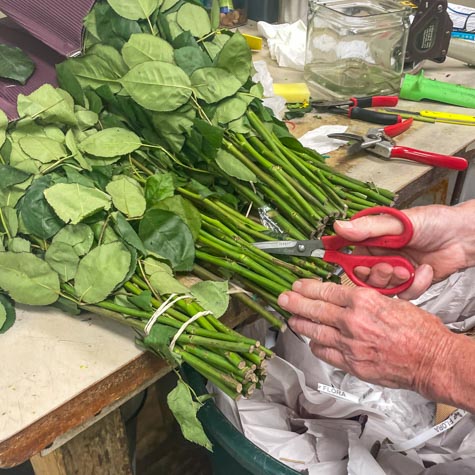
Cutting off the rubber bands.
Next, a large bucket with a mixture of water and flower food is filled up and set next to the rose bunches. Some florists measure scoops of flower food by hand and stir it into water to create the mixture. Here at Matlack, we have a machine that measures and combines it for us!
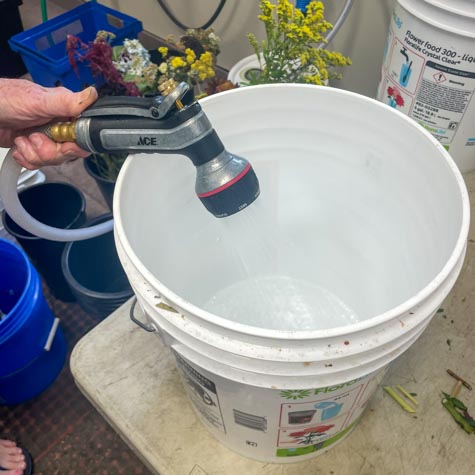
Bucket of flower food mixture.
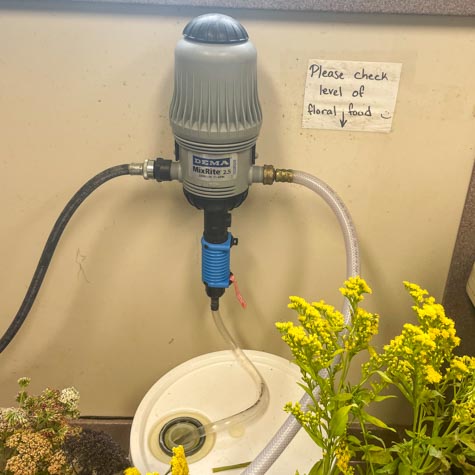
Here at Matlack, we have a machine that measures and mixes the flower food mixture for us!
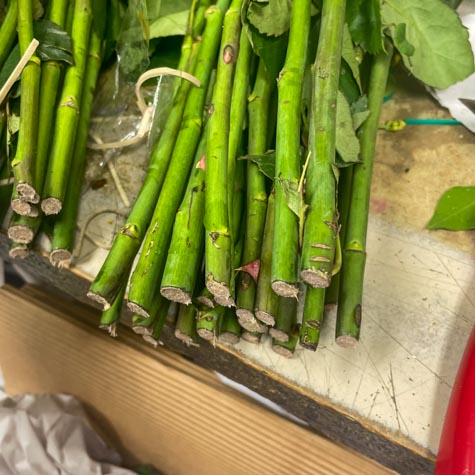
Stems before they are trimmed…
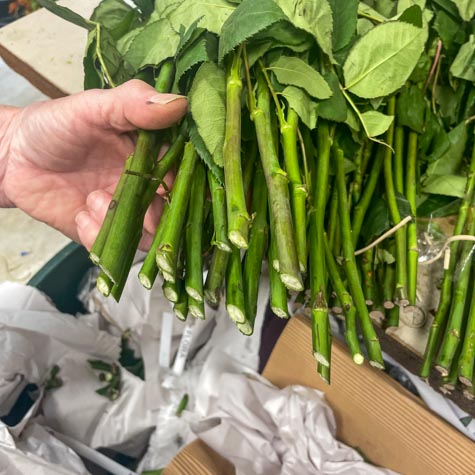
…and after!
Once the flower food mixture is prepped, all the stems are trimmed by hand. Rose stems are trimmed at an angle to allow water to be absorbed. If the stem sits flat on the bottom of the container, it won’t be able to absorb as much water.
From there, the freshly cut stems are dipped into a solution called “Quick Dip,” which helps protect the exposed white part of the bottom of the cut stem and helps draw water up into it. The roses are then put into the flower food mixture and are transported to our sales team who will let the roses sit for about a half hour to harden and absorb the mixture.
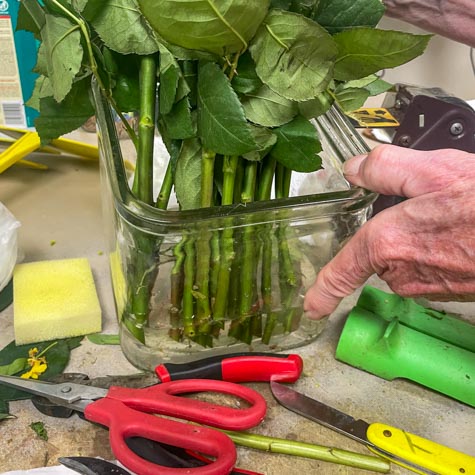
Roses in the Quick Dip.
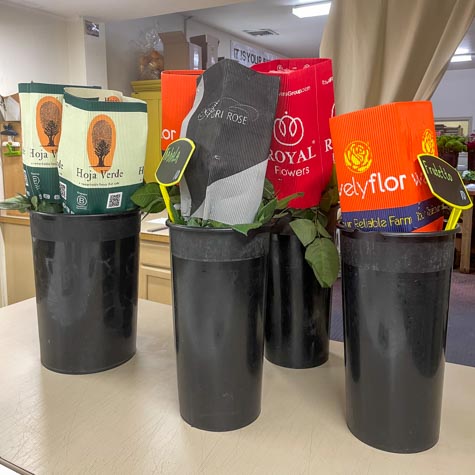
Stems harden for 30 minutes before they are prepped by sales.
PREP
Once the stems have hardened in the flower food mixture for about 30 minutes, it’s time for them to be prepped and put out onto the sales floor.
First, the petals are checked for any damage, mold, or fungus that may have occurred during shipping. Sales then removes the guard petals that make up the outer layer of petals on the rose. These petals help protect the inner part of the rose from damage during the growing and shipping process. No special tools are needed for this – the petals are hand-plucked directly from each rose!
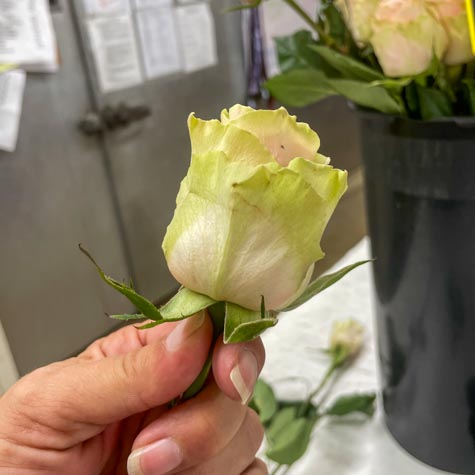
Guard petals
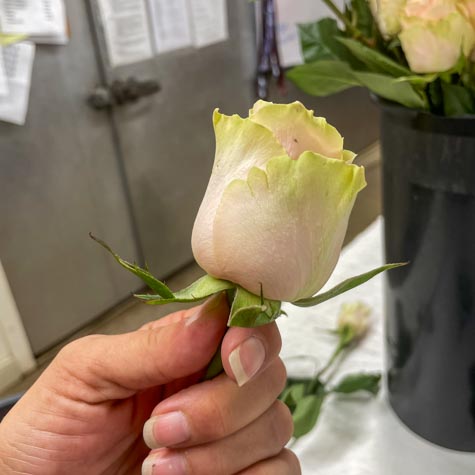
Guard petals removed
The next step is to strip the leaves and thorns off the bottom half of the rose stem. This process removes any dead or damaged foliage from the stem, as well as any foliage low enough to sit in the water in the container. Removing these leaves from the rose helps prevent bacteria from building up on the flower. Some leaves are left on the top of the stem both for looks and for our designers to use in arrangements if desired. The roses are stripped using a small tool called a rose stripper. The rose stripper clamps around the stem and has a small blade that cuts the foliage as it is pulled down the length of the stem.
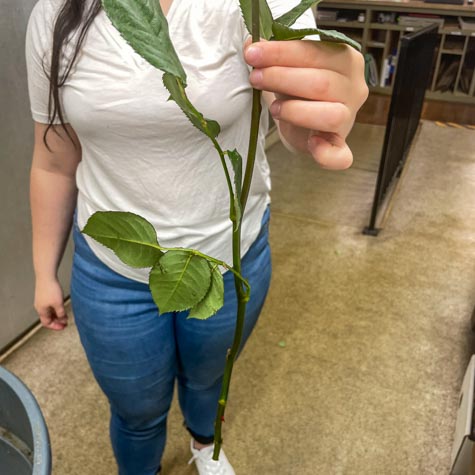
Before the rose stripper is used
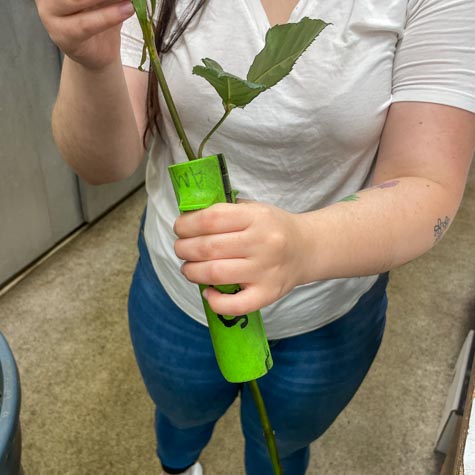
Using the rose stripper
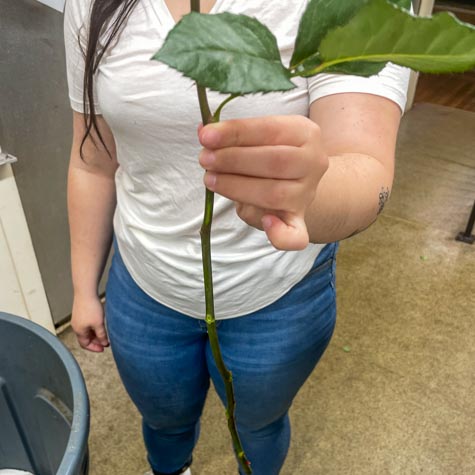
After the rose stripper is used
Finally, the roses are placed back in the bucket, priced, and put into the fridge at the front of the store to be sold individually and as part of our designer arrangements!
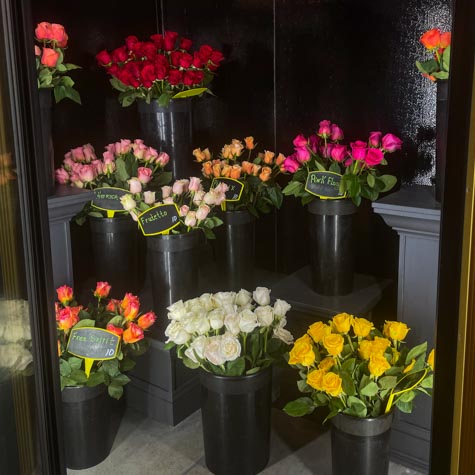
In the fridge ready to be sold!
Your Roses’ Journey
Getting roses ready for sale isn’t as simple as just putting them in water and putting them on display. The next time you buy an arrangement of roses, we hope you take a minute to appreciate the hard work that went into prepping the roses for you, and the long journey your roses took to get here!
And, if reading this makes you want a few roses for your space, make sure to check out our rose arrangements here.


